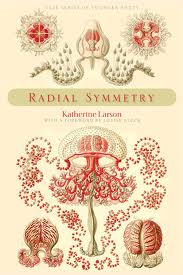
 What is it about the ocean that inspires otherwise precise and stoic scientists to cast off the shackles of structured, rigorously defined scientific language and swim, instead, through a sea of verse and meter. You can find examples littered across the internet, from Kevin Zelnio’s song lyrics featured in the Open Lab, to my own pedestrian attempts at Hardtack and Sardines. Of course, some poets rise above our amateur attempts and merge a deep understanding of the natural world with a precise eye for beauty, bringing both together in a sea of verse which stirs the soul and challenges the intellect. That is exactly what Katherine Larson has done with her first book of science-inspired poetry: Radial Symmetry.
What is it about the ocean that inspires otherwise precise and stoic scientists to cast off the shackles of structured, rigorously defined scientific language and swim, instead, through a sea of verse and meter. You can find examples littered across the internet, from Kevin Zelnio’s song lyrics featured in the Open Lab, to my own pedestrian attempts at Hardtack and Sardines. Of course, some poets rise above our amateur attempts and merge a deep understanding of the natural world with a precise eye for beauty, bringing both together in a sea of verse which stirs the soul and challenges the intellect. That is exactly what Katherine Larson has done with her first book of science-inspired poetry: Radial Symmetry.
It may seem a strange book for a marine science blog to review, but Larson, a molecular biologist by training, has captured a the spirit of scientific inquiry and the ocean in a way that few other mediums can. Her poetry evokes the thrill of discovery as well as frustration. How many practicing scientists can’t relate to Love at thirty-two degrees, a poem that begins by observing the branchial hearts of a squid, when she announces:
Last night I threw my lab coat in the fire
and drove all night through the Arizona desert
with a thermos full of silver tequila
Or declares, in A lime tree for San Cristobal:
I know I’m still alive because I love to eat.
…while meditating on a the architecture of a sharks jaw.
And then there’s the haunting, long-form poem Ghost Nets, which perfectly captures so many elements of our connection to the sea. Larson’s skill is in weaving together two systems of describing the world that rarely interact. I found few chords in this slim volume that didn’t stir subliminal emotion. While the $35 price tag is hefty, the kindle version is modestly priced and, unusual for e-book poetry collections, the formatting remains true to the original.
Anyone interested in taking a different look at the world, or in understanding the emotional attachments scientists build with their subjects, would do well to check out Radial Symmetry. It’s a quick, but deeply enjoyable read.